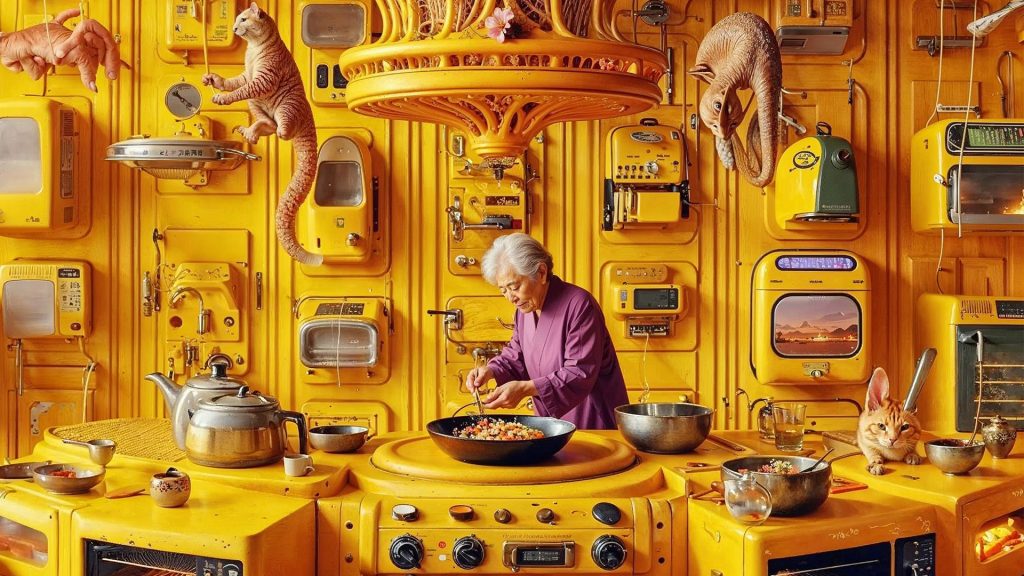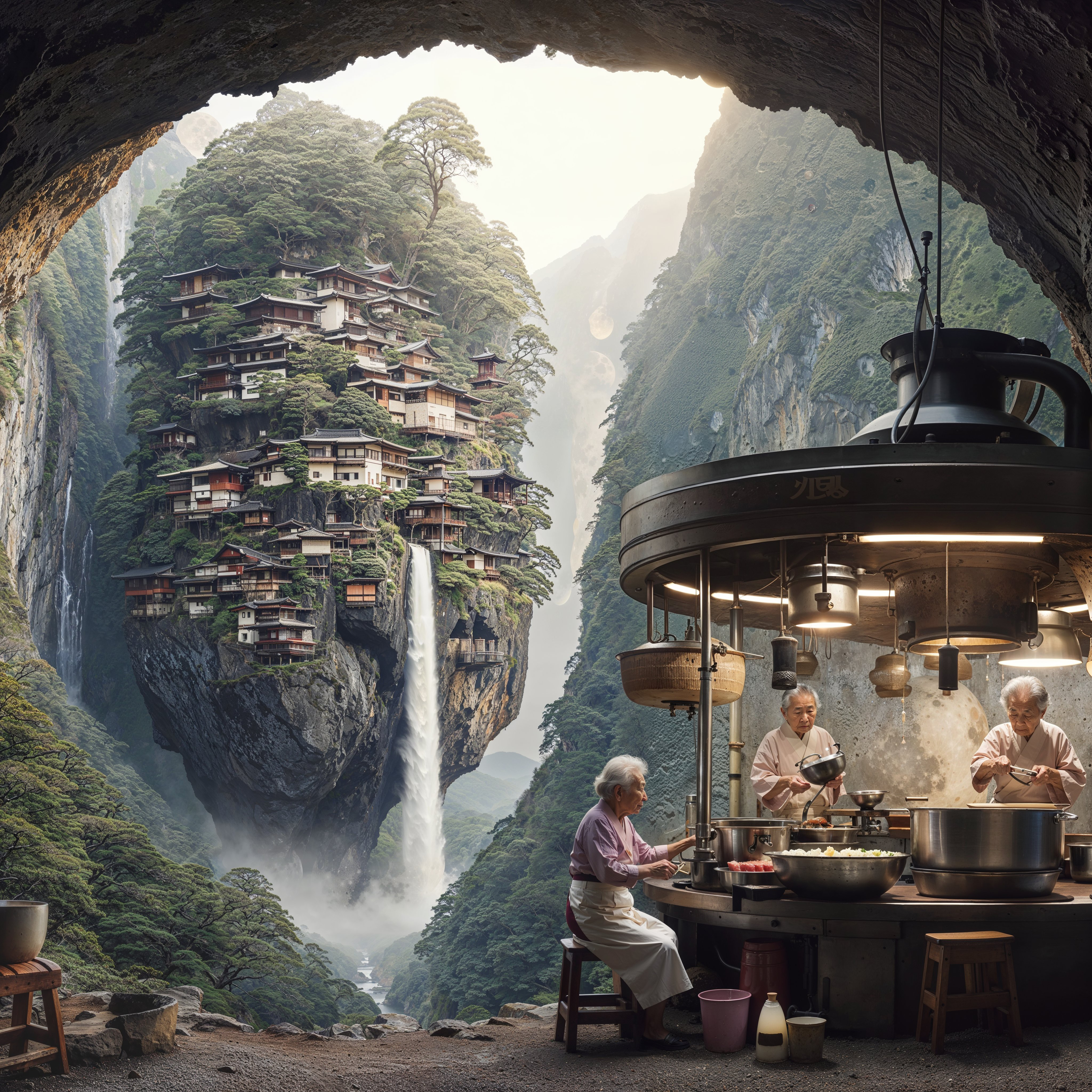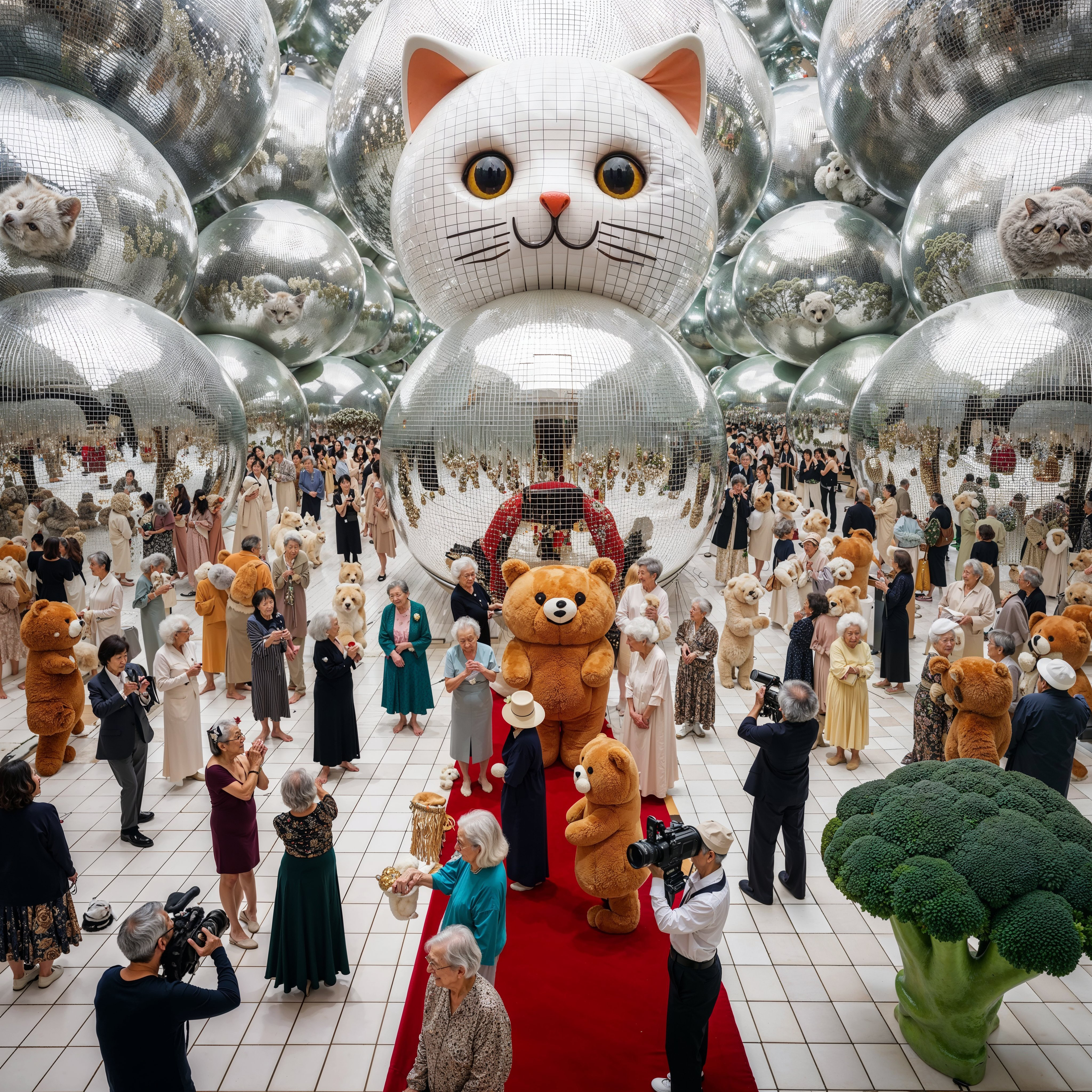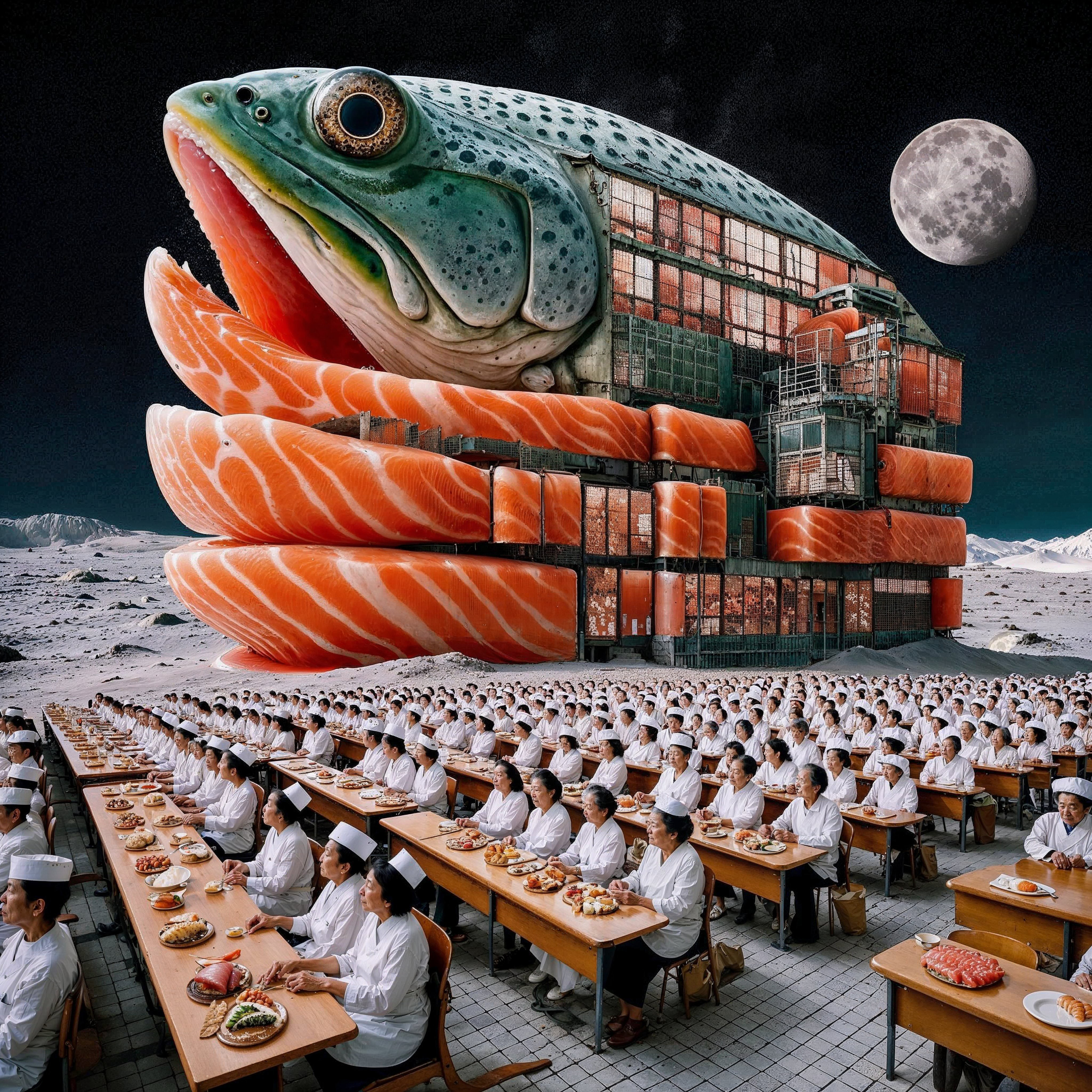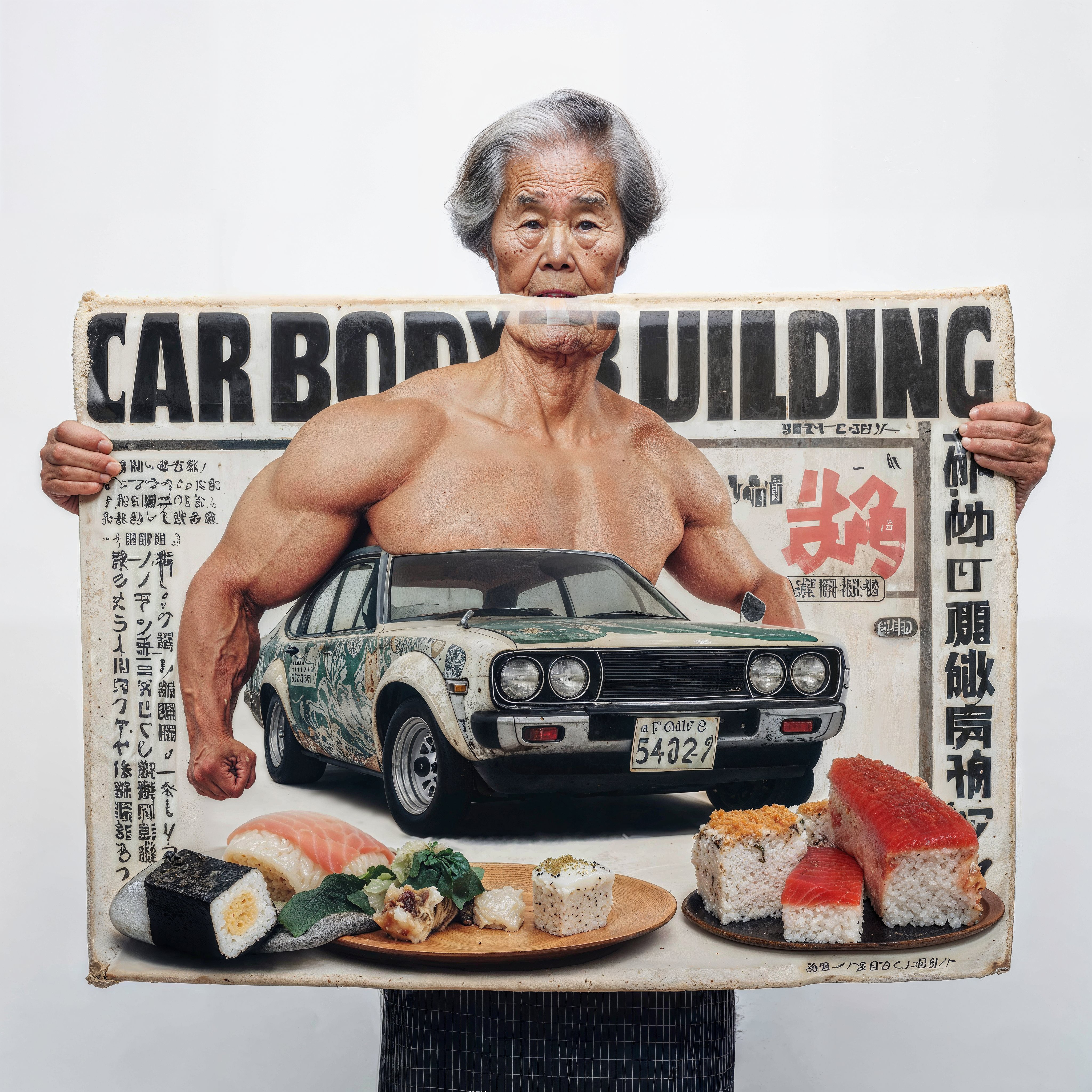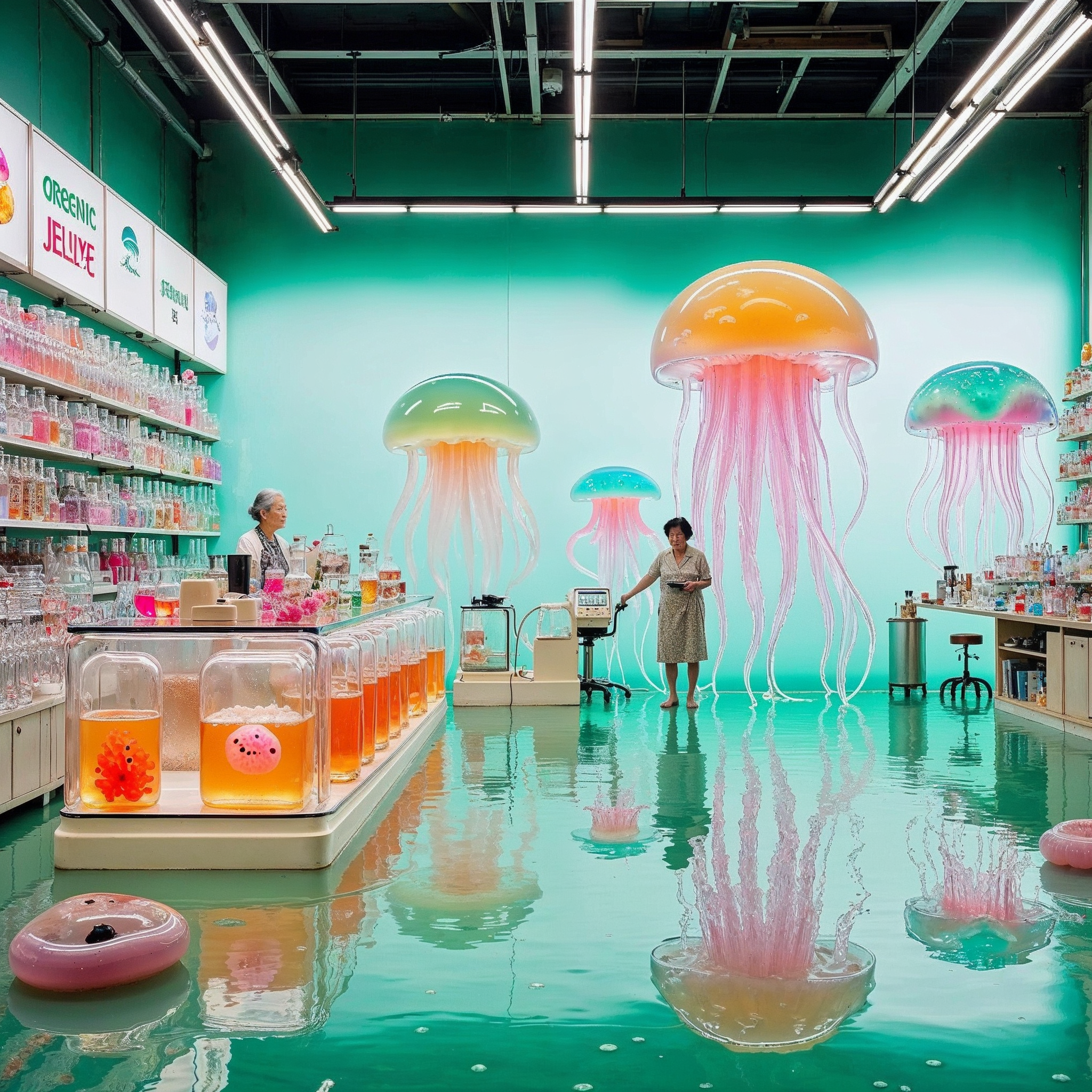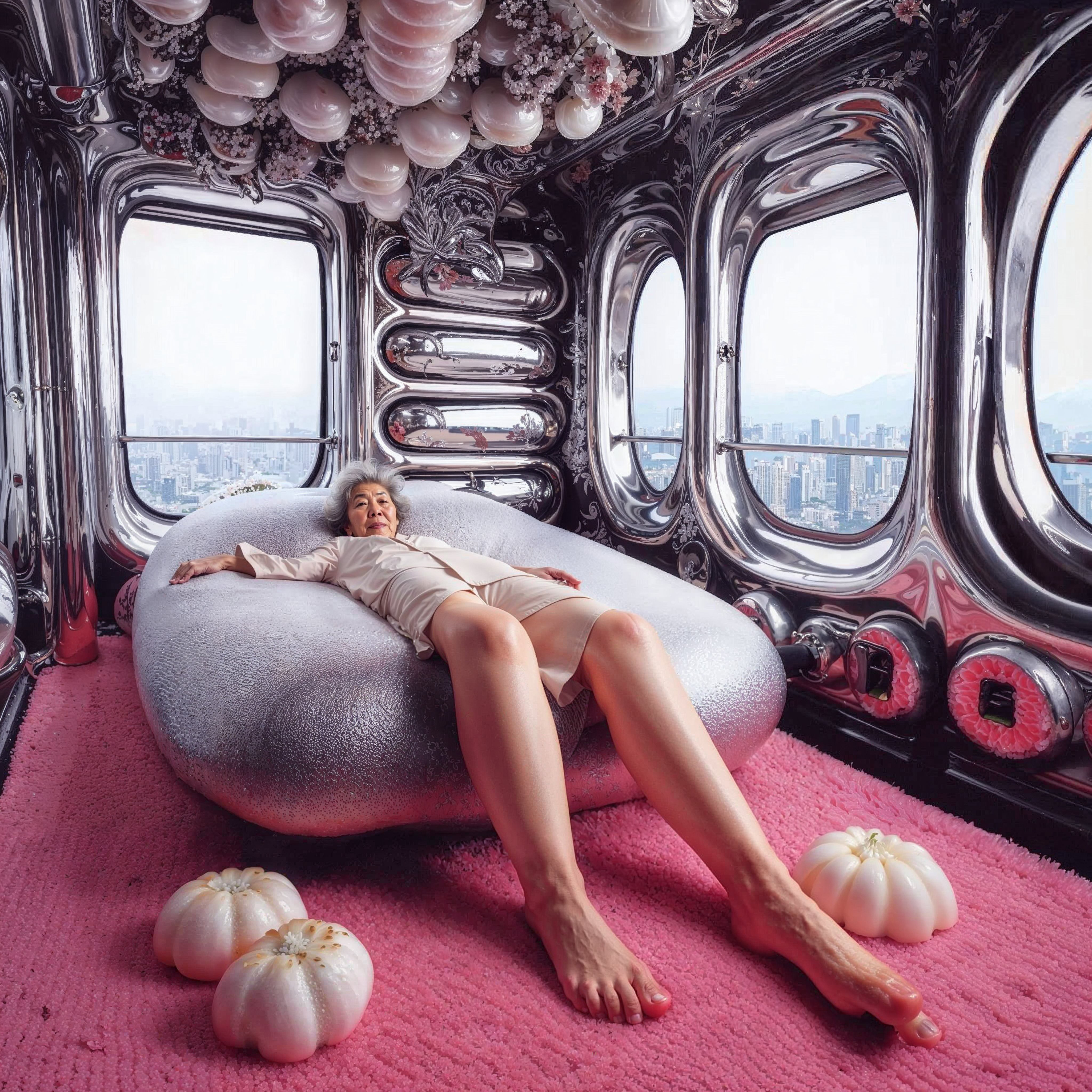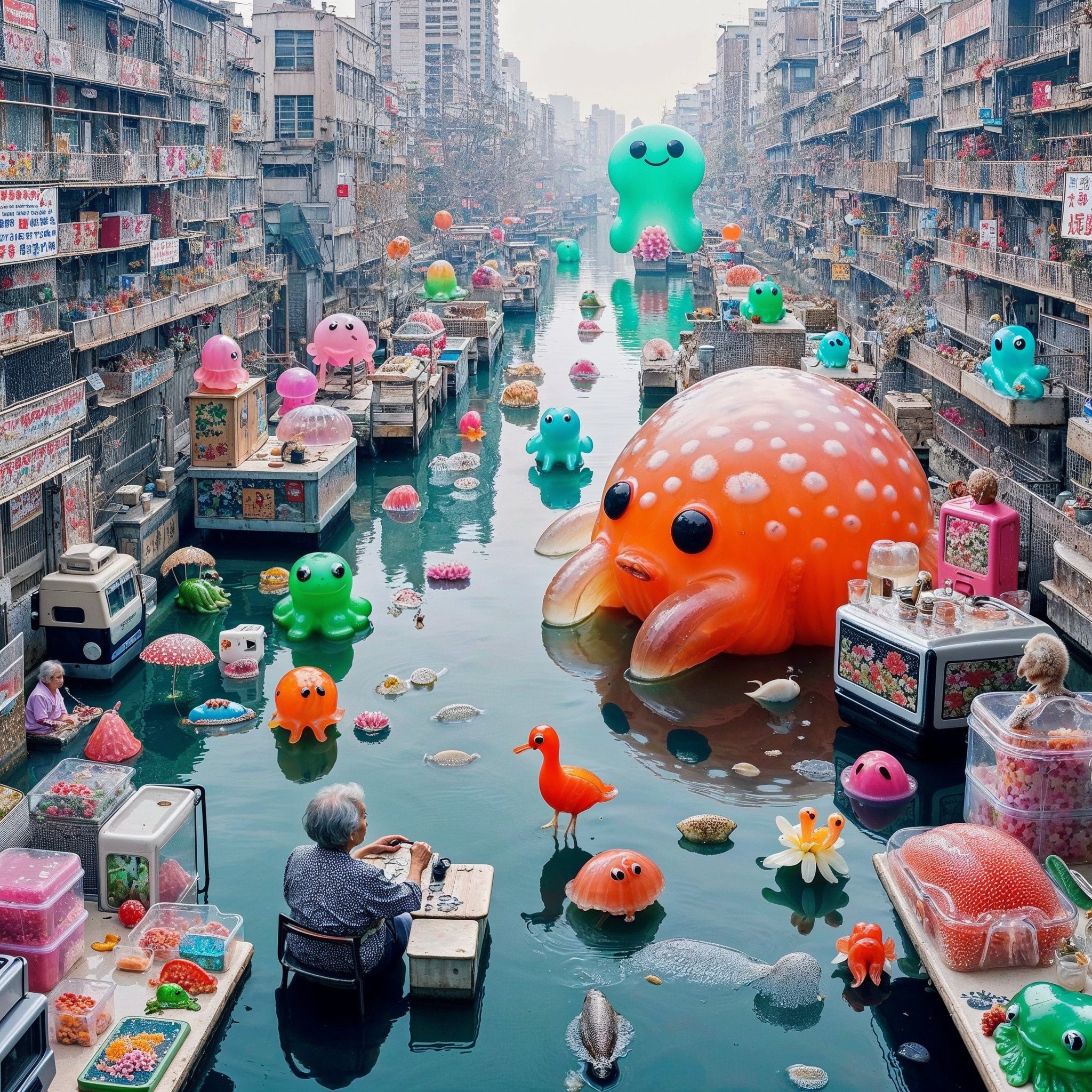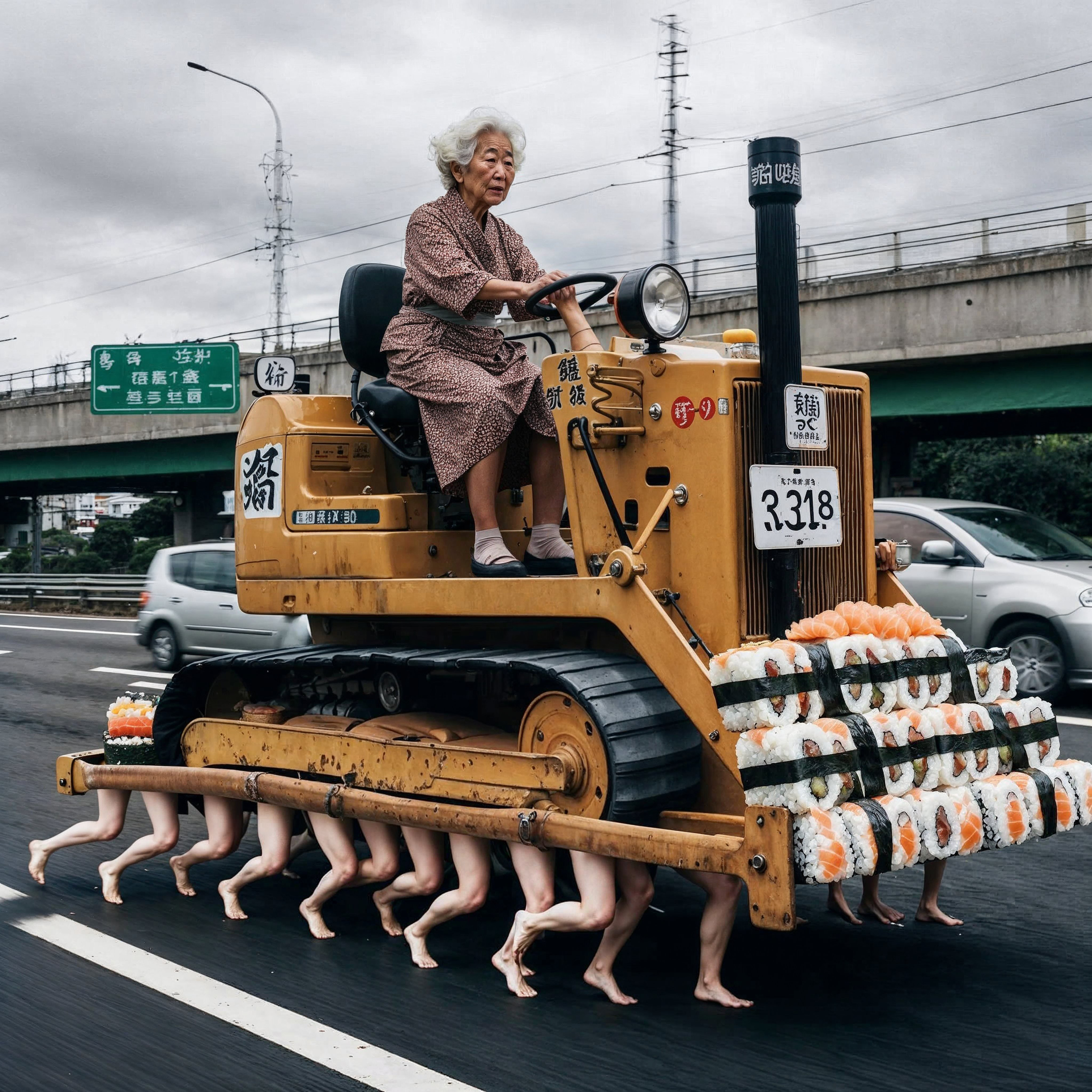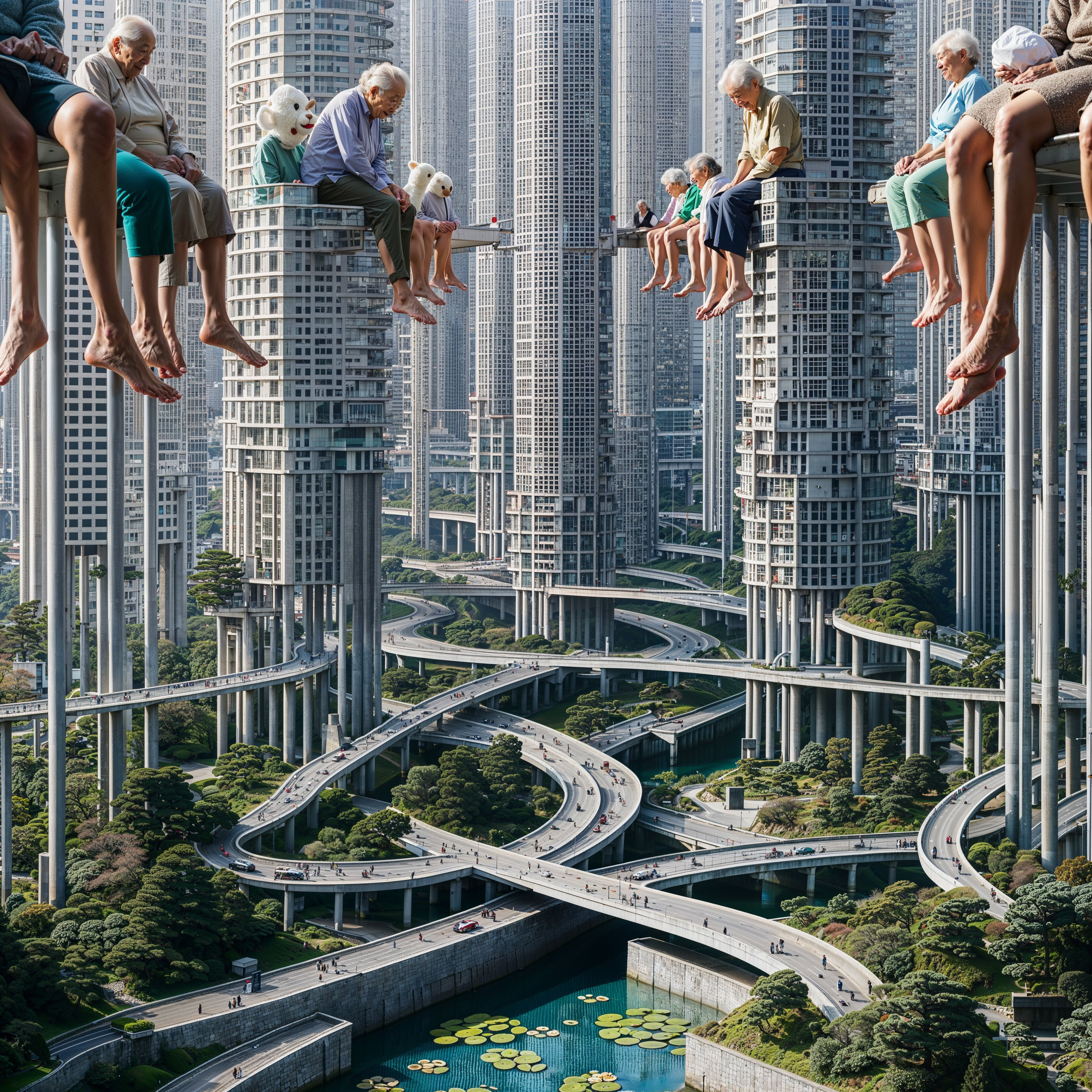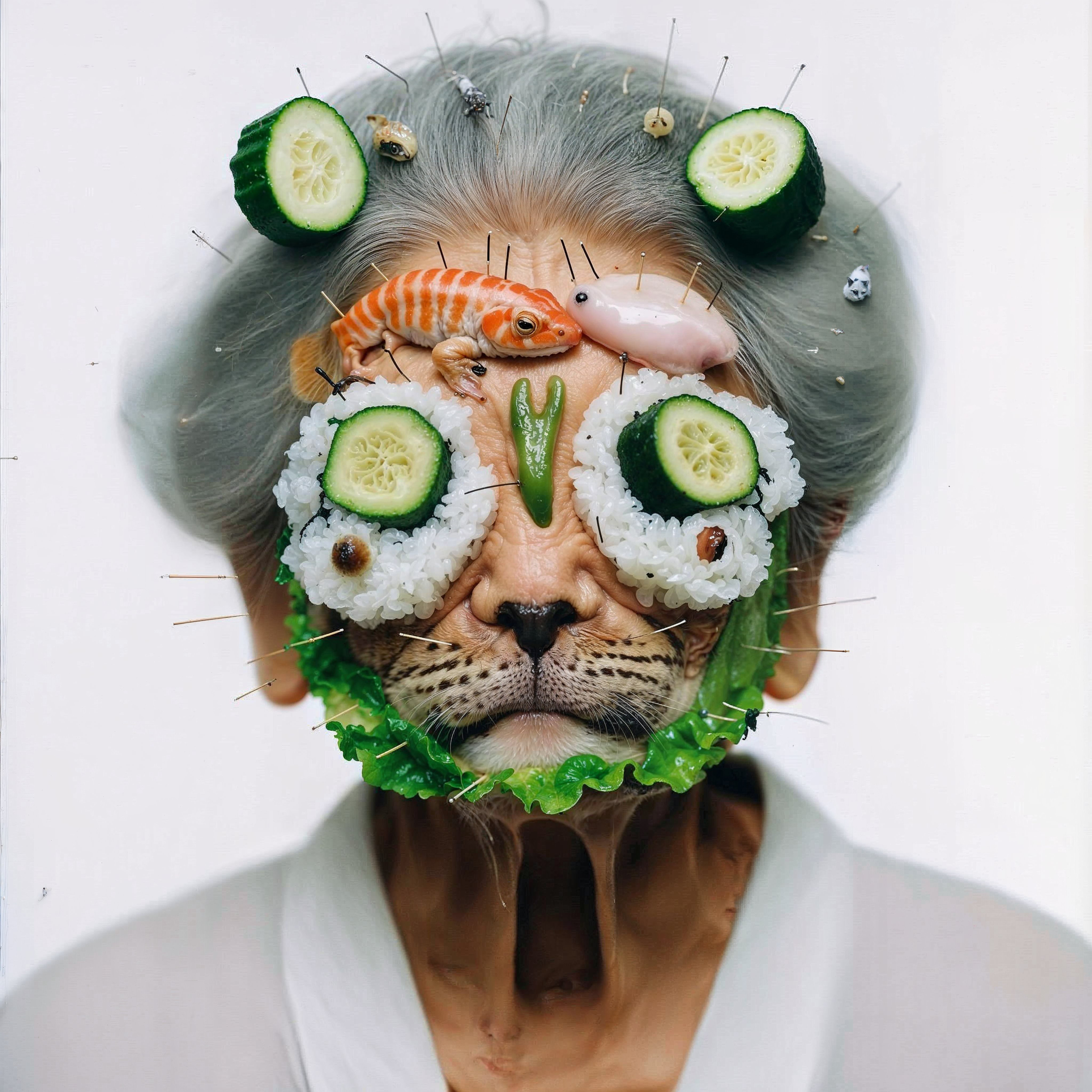At this year’s OFFF Festival, I had the pleasure of meeting a diverse range of creatives, however, none surprised me as much as Niceauntines. Originally from Singapore, her eclectic artwork combines mundane elements of Asian culture with surrealist themes, creating immersive pieces beyond our imagination. The twist? They’re all created with AI.
Candidly, the future of AI has always worried me, but after speaking to Niceaunties, I was shocked to find that my opinion had changed. Her world-building project, The Auntieverse, is as much a playground for creativity as it is a cultural time capsule, proving there’s artistry to be found in AI art. Sitting down with Niceaunties, we discussed the inspiration behind her work, how she curated her style, and how opinions on AI art are changing. Behind the bizarre dreamscape of The Auntieverse, I found an artist with boundless creativity, redefining what art means in 2025.
How did Niceaunties develop from your background in architecture?
It came out of the blue. I was looking at Instagram one day, and I saw some interesting images made for architecture design – ones that would probably take months traditionally.
I then saw a hashtag for a word I’ve never seen before. It was Midjourney. I got curious, Googled it, went on the website and signed up to try. From that moment, I couldn’t stop. The moment you write something, the image appears immediately. It was like a Eureka moment that completely changed the way I think about the creation of ideas and visuals. In my TED talk last year, I said that I feel like using AI to create is the shortest distance between my ideas and a visual.
At what point did the Aunties come in?
It started with the name. I needed a platform to put all my outputs on, so Instagram was an easy choice. I thought, ‘Okay, I’m going to call it Niceaunties’ – it just came to me like that. Naturally, auntie culture is all around us, but nobody talks about it. I just wanted a big umbrella story arc that would guide my posts so they’re not just random brain farts.
It started with a Club 33 concept in outer space concept in some galaxy where aunties meet up to share stories of their adventures – a multiverse. Then it developed into more, and it became a world-building project.
How did the Auntieverse develop from these early creations?
It started with the club, and then it became me trying to draw my mother because my mother dances, performs and does this qigong in the park – I wanted to remember that. So I started with auntie community life, and then it grew into them going crazy with parties on the beach, or sometimes more serious topics.
In the early days of AI, it was very simplistic – everyone was trying to understand how to use the tools because you needed to speak the AI’s language in order for the prompts to work. I felt like I was developing with the technology. So if you look at my work two years ago, it’s very different in terms of quality. The only thing that can tie everything together is the narrative.
How does your culture inspire your art?
My aunties and my grandma lived in a very particular time in Singapore. Nation-building years. Singapore is a young nation – it was founded in 1965, so it’s very new. My parents’ generation were the pioneers of the country. A lot of them worked in factories, and life was difficult; they were transitioning from a village to living in apartments, with up to 10-12 people staying in a tiny little flat.
There are particular sorts of behaviour, stuck between moving from the past to future traditions, converting to modern life after being suppressed by 2,000 years of Chinese culture. That creates a very complex character. I imagine that in about 50 to 100 years, they will go extinct, because people like my generation will become a very different set of aunties. I probably won’t say the things that they say but I want to remember them.
You mentioned your art covers some more serious topics, is the goal to make a statement?
I was just trying to express my opinions. In Asia, I was brought up in a home where I wasn’t allowed to talk back to my elders – it’s very hierarchical, and everything is bottled up inside you. Even when you felt sad, sometimes you weren’t allowed to show your feelings, or at least it felt like that.
Before AI, I was living a life full of discipline and rules and control, and I felt like I was actually bottling up all these ideas and feelings inside me. It’s like like a flood gate opened and everything just poured out.
What AI tools do you use?
I use Dali mostly, and Magnific – it’s an amazing software that upscales images and adds details. I animate my art in a variety of software like Sora, Kling and Runway.
How have you refined the way you work with AI across the years?
In the beginning, there weren’t many AI programmes, and with each one of them, you had to prompt differently. It’s not like talking to a human. You have to put sporadic words in different sequences to create an image, and when you use another programme, the language of sequencing of those words becomes completely different.
They’re also developing the software as we go along, so now you can use more natural language prompting, which means it’s more like talking to another person – two years ago, it wasn’t like this. I felt like I was changing the way I was speaking to the machine all the time, so I never got good at prompting. It’s exciting because it’s always experimental and new.
How has the reception around your art changed since you started?
There has always been a lot of conversation surrounding my work, and I think that’s good. There will always be positive and negative voices, but I see it as a good debate because it makes people think.
There are so many positive uses of AI in the world that nobody knows about. If it’s minted on the blockchain, it’s there forever – what a great way to preserve history. There were very hostile comments in the beginning, but right now it’s much better. It’s a new tool – just try it. Who knows what it can do for you? Try it out before making a decision about it.
In the past you’ve created drawings and sculptures – do you still enjoy using traditional mediums?
Before AI, I was using computers to create digital images. 3D models and graphics were all done with a computer. Now with AI, suddenly those tools become traditional. I still use those tools – Photoshop, Microsoft Word – it’s a balance of all kinds. Some things you never throw away. The way I think about ideas was already like this when I was working in architecture. How my ideas come together is exactly the same – with AI, it’s just faster.
I want to do more tactile work too, it could be anything. I’d like to do some ceramics and maybe try the process of making something physical before converting it to digital and seeing how it evolves. Who knows what the aunties will do?
You may like

